Version 9
Handling of variables
January 09, 2019
Improved handling of variables
This update contains many improvements in the handling of variables.
The functions defined in the Functions application can now be used in other applications.
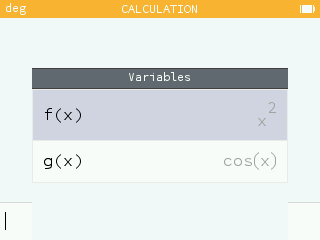
The menu for the var key has been changed accordingly. The Functions section contains all the functions appearing in the Functions application and the Expressions section contains the numeric and matrix variables.
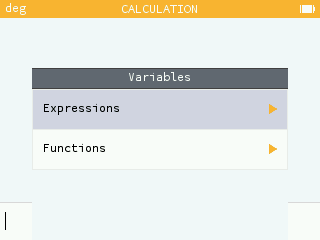
It is possible to define composite functions using the name of already existing functions.
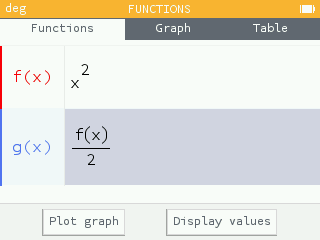
You can also define a function expression from the Calculationsapplication. The function will then be listed in the Functions application.
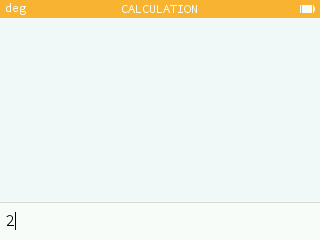
Variable names (expressions or functions) can be chosen freely using the characters: a...z, A...Z, 0...9 and _. A variable name cannot start with a number nor contain more than 7 characters.
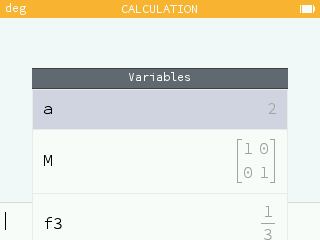
It is possible to rename a function from the Functions application by selecting the name of the function and pressing the OK key.
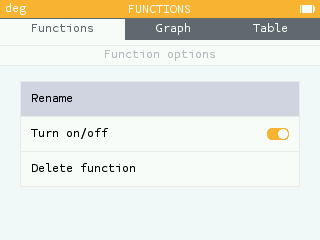
- The number of functions that the list of functions can contain is no longer limited in number.
- The following Toolbox Toolbox functions take an additional argument:
diff(),int(),sum(),prod(). It is thus possible to indicate with respect to which variable one derives, integrates, …
And also...
In the Python, application, the functions float() and eval() have been added to the catalog.
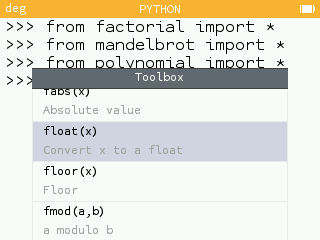
log(x,10) is automatically transformed into log(x).
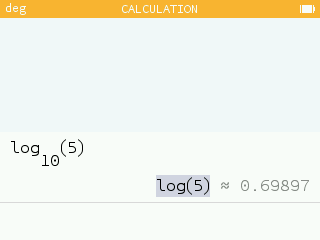
- In the Calculation application, if the result of the approximation of the exact value is
undef,it is no longer displayed. - In the Python application, it is possible to import the module
timeand use the functionssleep()andmonotonic(). - The quantity of Python scripts is no longer limited in number.
- The software includes a new parser.
- The drawing of the simulator is now done in real time for the uses of the module
kandinskyin Python. - In the Statistics application, a bug on the display of histogram tick marks has been fixed.
- In the Regression application, a bug in selecting table cells in the Stats tab has been fixed. The cells were also enlarged.
Special thanks
We want to thank the contributors who helped in the development of this update: Jean-Baptiste Boric, Lionel Debroux and Damien Nicolet.